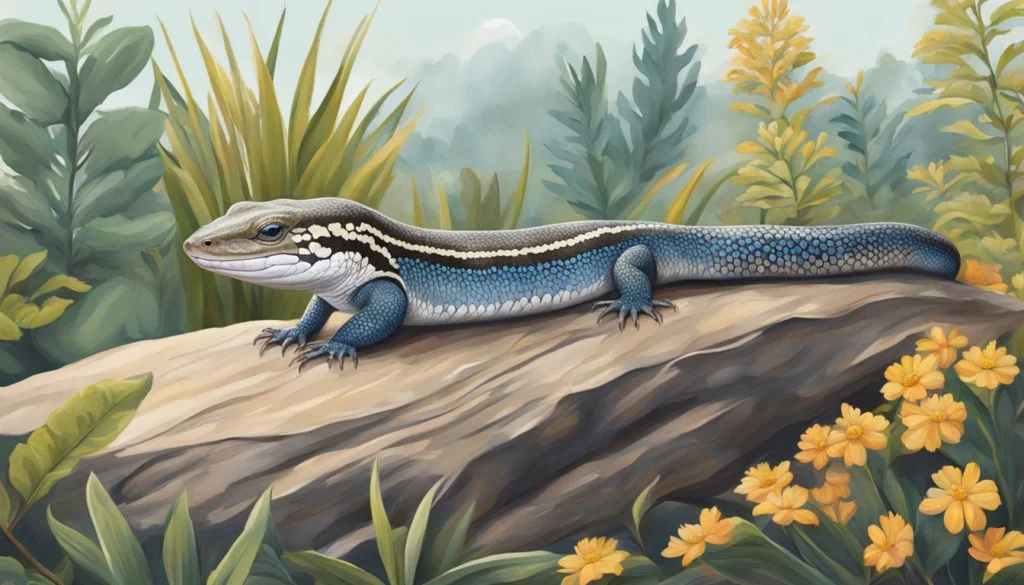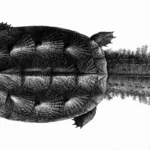The Blue-Tongued Skink is one of the most unique and fascinating reptiles in the world. Named for its signature bright blue tongue, this reptile is known for its calm demeanor, interesting defense mechanisms, and adaptability to various environments. Found primarily in Australia, Indonesia, and New Guinea, these skinks have become popular pets due to their docile nature and distinct appearance.
In this article, we’ll explore some of the most amazing facts about Blue-Tongued Skinks, including their natural habitat, diet, behaviors, and why they have that famous blue tongue.
What Is a Blue-Tongued Skink?
The Blue-Tongued Skink belongs to the Scincidae family, which includes a wide variety of skinks. These medium-sized lizards are known for their stocky bodies, short legs, and of course, their blue tongues. There are several species of Blue-Tongued Skinks, but the most well-known is the Eastern Blue-Tongued Skink (Tiliqua scincoides), which is native to Australia.
1. Appearance
The Blue-Tongued Skink has a distinct appearance, characterized by its long, cylindrical body covered in smooth scales that are usually a mix of brown, gray, and black. Its most noticeable feature, however, is its bright blue tongue, which it flashes as a defense mechanism.
These skinks can grow up to 20 inches (50 cm) in length, making them one of the larger skink species. They have short, stumpy legs and a broad head, giving them a somewhat bulky appearance compared to other lizards.
2. The Famous Blue Tongue
The Blue-Tongued Skink’s bright blue tongue is not just for show; it serves a critical purpose. When threatened by predators, the skink will open its mouth wide and flash its blue tongue, often hissing or puffing up its body to appear larger. This startling display is meant to scare off predators by making the skink look dangerous or unappetizing.
Interestingly, the blue color of the tongue contrasts sharply with the skink’s otherwise earthy tones, making it an effective defense mechanism in the wild.
Where Do Blue-Tongued Skinks Live?
Blue-Tongued Skinks are native to Australia, New Guinea, and Indonesia, although different species are adapted to various habitats. They are highly adaptable reptiles that can thrive in a range of environments, from arid deserts to moist rainforests.
1. Habitat and Distribution
In Australia, Blue-Tongued Skinks are found across most of the country, from the dry, rocky deserts of the interior to the coastal woodlands and scrublands. They are also common in suburban gardens, where they seek out food and shelter. Their ability to thrive in urban areas has helped them coexist with humans, and they are often spotted in backyards or parks.
In New Guinea and Indonesia, these skinks are typically found in more tropical environments, including forests and agricultural areas where they hunt for food and seek shelter.
2. Shelter and Territory
Blue-Tongued Skinks are mostly terrestrial, meaning they spend their time on the ground. They seek shelter in rock crevices, fallen logs, and burrows, which help protect them from predators and extreme temperatures. Although they are not particularly territorial, they tend to establish home ranges where they can find reliable food sources and shelter.
What Do Blue-Tongued Skinks Eat?
Blue-Tongued Skinks are omnivores, meaning they eat both plants and animals. Their diet in the wild is incredibly varied, and they will consume whatever is available in their environment. This adaptability in their diet is one reason why they are able to survive in such diverse habitats.
1. Diet in the Wild
In their natural habitats, Blue-Tongued Skinks primarily feed on insects, snails, small vertebrates, and a wide range of plant material. They are opportunistic feeders and will eat:
- Insects: Crickets, beetles, and caterpillars are common prey.
- Mollusks: Snails and slugs are a favorite food for Blue-Tongued Skinks, thanks to their strong jaws that can crush shells.
- Fruits and Vegetables: Skinks enjoy eating soft fruits, berries, and leafy greens.
- Small Vertebrates: Occasionally, they may eat small lizards or mice if they can catch them.
2. Diet in Captivity
In captivity, Blue-Tongued Skinks are typically fed a balanced diet that includes insects, fruits, vegetables, and commercial reptile foods. It’s important to ensure that pet skinks receive a varied diet that meets their nutritional needs, as an unbalanced diet can lead to health issues.
Skinks in captivity are also known to enjoy eating hard-boiled eggs, cooked meats, and various insects like mealworms and crickets. Their diverse palate makes them relatively easy to care for in terms of feeding.
Behavior of Blue-Tongued Skinks
Blue-Tongued Skinks are generally considered docile and calm reptiles. While they are capable of defending themselves if threatened, they tend to avoid confrontation and prefer to hide or flee from predators rather than engage in aggressive behavior.
1. Temperament
One of the reasons Blue-Tongued Skinks are so popular as pets is their gentle temperament. Unlike many other reptiles, these skinks are not overly aggressive and are typically easy to handle once they become accustomed to human interaction. They rarely bite unless provoked, and even when threatened, their first response is usually to flash their blue tongue or hiss rather than attack.
2. Communication
Blue-Tongued Skinks communicate with other skinks and potential predators through body language and vocalizations. In addition to flashing their blue tongues, they may puff up their bodies to appear larger and more intimidating. They also hiss as a warning signal when they feel threatened.
3. Burrowing and Hiding
Blue-Tongued Skinks are burrowers, often digging into the soil to create a safe hiding place. They prefer environments where they can easily find shelter, and they spend a significant amount of time hiding under rocks, logs, or in burrows.
Defense Mechanisms: Why the Blue Tongue?
The Blue-Tongued Skink’s signature blue tongue is more than just an odd physical feature—it’s a highly effective defense mechanism. When a predator threatens the skink, it will open its mouth wide and stick out its vivid blue tongue, hoping to startle or confuse the attacker.
1. Startling Predators
The blue tongue is an unexpected and vivid feature, especially in the wild where most animals are used to seeing browns, greens, and grays. By flashing this bright color, the skink can momentarily confuse or frighten a predator, buying enough time to make a quick getaway.
2. Mimicking Toxic Species
Some biologists believe that the Blue-Tongued Skink’s blue tongue may mimic the appearance of toxic or venomous animals, such as poisonous frogs or snakes, which also display bright colors as a warning. This might help the skink avoid predators that associate bright colors with danger.
Reproduction and Life Cycle
Blue-Tongued Skinks are viviparous, meaning they give birth to live young rather than laying eggs. This is relatively rare among reptiles and is one of the many unique traits of this species.
1. Mating and Gestation
During the breeding season, which typically occurs in the spring, male skinks will compete for the attention of females. After mating, the female carries the developing embryos inside her body for a gestation period of about 3 to 4 months.
2. Live Birth
When the babies are born, the mother gives birth to live young, usually in litters of 5 to 15 offspring. The young are fully formed and capable of fending for themselves from the moment of birth. While they receive no parental care, the newborn skinks are independent and start hunting for food soon after birth.
3. Lifespan
Blue-Tongued Skinks can live up to 20 years in the wild, although in captivity, with proper care, they can live even longer. Their relatively long lifespan, combined with their calm temperament, makes them an appealing choice for reptile enthusiasts.
Fascinating Facts About Blue-Tongued Skinks
- Long Lifespan: Blue-Tongued Skinks can live for over 20 years, making them long-term companions for pet owners.
- Unique Defense Mechanism: The Blue-Tongued Skink’s vivid blue tongue is a powerful deterrent against predators, flashing its bright color to startle or confuse threats.
- Live Birth: Unlike many reptiles, Blue-Tongued Skinks give birth to live young rather than laying eggs, with the babies being fully independent at birth.
- Omnivorous Diet: These skinks are omnivores, meaning they eat a wide variety of food, including insects, fruits, vegetables, and even small vertebrates.
- Docile Pets: Blue-Tongued Skinks are known for their docile nature and make great pets for reptile enthusiasts due to their calm demeanor and ease of handling.
Conclusion
The Blue-Tongued Skink is a remarkable reptile, known for its striking blue tongue, calm temperament, and adaptability to various environments. Whether basking in the sun or flashing its tongue in defense, this unique creature continues to fascinate both scientists and pet owners alike. Its long lifespan, relatively easy care, and docile nature make it one of the most popular reptiles in the world, whether in the wild or as a cherished pet.
FAQs
Why do Blue-Tongued Skinks have blue tongues?
Blue-Tongued Skinks use their bright blue tongues as a defense mechanism. When threatened, they flash their tongue to startle or confuse predators, helping them escape danger.
Are Blue-Tongued Skinks good pets?
Yes, Blue-Tongued Skinks are known for their docile nature and are considered great pets, especially for reptile enthusiasts. They are easy to handle and have relatively simple care requirements.
What do Blue-Tongued Skinks eat?
Blue-Tongued Skinks are omnivores and eat a variety of foods, including insects, snails, fruits, vegetables, and small animals. In captivity, they can be fed a balanced diet of vegetables, fruits, and protein.
How long do Blue-Tongued Skinks live?
Blue-Tongued Skinks can live up to 20 years or more, especially in captivity with proper care.
Do Blue-Tongued Skinks give birth to live young?
Yes, Blue-Tongued Skinks are viviparous, meaning they give birth to live young rather than laying eggs.


